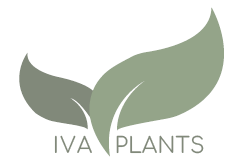Hibiscus catches the eye immediately. Its deep red colour and bold, tangy flavour make it one of the most recognisable herbal teas. But there’s more to this plant than meets the eye. Used for centuries across cultures, hibiscus isn’t just decorative. It’s functional, rich in tradition, and full of character.

1. It’s not the same as the hibiscus in your garden
The hibiscus used for tea is a specific species called Hibiscus sabdariffa, also known as roselle. Unlike the large, tropical flowers people often grow for their beauty, roselle has thick, fleshy calyxes. These are the parts that get dried and steeped into tea, bringing the flavour, the colour, and most of the nutrients.
2. It has roots in many cultures
Hibiscus tea is deeply rooted in global traditions. In Egypt it’s known as karkadé. In West Africa it’s bissap. In Mexico it’s served cold as agua de Jamaica. The names change, but the drink remains beloved across continents — part of both daily life and celebration.
3. Hibiscus tea may support heart health
Several studies suggest that hibiscus tea may help lower blood pressure over time. It’s not a substitute for medical treatment, but it can be a valuable part of a balanced lifestyle, especially when combined with a healthy diet and regular movement.
4. It’s caffeine-free, yet refreshing
Hibiscus doesn’t contain caffeine, but its sharp, fruity flavour makes it feel energising. That’s why it’s often served chilled in warmer countries. It’s a rare herbal tea that feels cooling, even without ice.
5. The colour reveals its power
The vibrant red tone of hibiscus tea comes from natural plant pigments called anthocyanins. These compounds act as antioxidants and are thought to help reduce inflammation and protect cells from stress. In other words, the colour isn’t just pretty — it tells a story about what’s inside.
6. It works beautifully in blends
Hibiscus pairs well with herbs like mint, ginger, rosehip and lemongrass. Its tartness brings balance and structure, which is why it’s often used as a base in fruit or wellness teas. It adds depth without overwhelming other flavours.
7. It’s gorgeous, but it stains
Hibiscus tea has a strong pigment that clings to cups, cloth and fingers. If you’re brewing it at home, just know it tends to leave a trace. Many would say that’s part of its charm.
Hibiscus is more than just a beautiful red flower turned tea. It carries with it centuries of stories, rituals and daily habits from people around the world. In every cup, there’s a little history and a lot of character. It’s vibrant, grounding, complex and refreshing all at once. Whether you drink it for its health properties, its flavour or simply its colour, hibiscus has a way of standing out. And maybe that’s its greatest quality — it refuses to be ordinary.







I first came across IVA Plants and Alex their founder at my local monthly Artisan market and decided to try the Sleep Well tea and the Rose Garden Tea. I was very impressed with the lovely aroma and the quality of the ingredients. There is an online shop but I thought I would head down to the market again to stock up. This time I bought dried Chamomile flowers, Rose buds and a Houjicha roasted greentea that she suggested for me as it is lower in caffeine. I would highly recommend all of the purchases I have made.